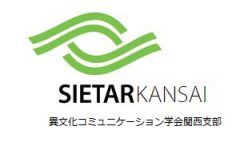Presenter: Yoko Matsuda (University of Hyogo) Date: February 19, 2006 (Sunday), 2:00pm-4:00pm Place: Takatsuki Shiritsu Shogai Gakushu Center (Room 3) 高槻市立生涯学習センター(第3会議室)
(10min. walk from the south exit of JR Takatsuki Station or
Hankyu Takatsuki City Station ) (Please see the map on the other side. Or http://www.city.takatsuki.osaka.jp/bunka/manabi/accessmap.html) TEL: 072(674)7700
Fee: 500yen for members and students, 1,000yen for non-members
Language: Japanese
Description of the Presentation
In this presentation, I will introduce a simulation called ‘Give and Take’, which was created by Dr. S.Thiagi, and we’ll discuss group communication processes for better multicultural team management. In order to work effectively among multicultural team members, the following points are considered to be important: (1) To clarify a common goal of the team project (2) To clarify the roles and responsibilities of each member to achieve the common goal. In this simulation, we’ll work in a small group and decide on a project for the team and each member’s role. In the end we’ll judge how accurately we share the information and examine the outcomes to see if each member has clearly understood the roles and responsibilities. After the experiential activity, we’ll discuss and find causes of miscommunication and successful strategies for accurate communication in multicultural team management.
Profile of the Presenter
Yoko Matsuda is a professor at the University of Hyogo (formerly Kobe University of Commerce), teaching Intercultural Communication and Japanese language and culture to international students. She has been an active committee member of SIETAR-Kansai since its establishment, having been a chapter chair from 2000-2002 and currently office chairperson. Her current publications include: Australian Language Policies and Multiculturalism, (University of Hyogo, 2005), “Intercultural Communication Education for Multicultural Society: Perspectives on Identity” (Jinbunronshu,36-4, Kobe University of Commerce, 2001), “The Use of Multimedia Information Technology and Web-cameras in Intercultural Communication Classes” (Shodaironshu, 55-2, Kobe University of Commerce, 2003) and many others. She has an MA in Sociolinguistics from Osaka University and an MA in linguistics from the University of Rochester, New York, where she studied as a Fulbright student. She also taught at the University of Adelaide in Australia and Kansai University for Foreign Studies.
